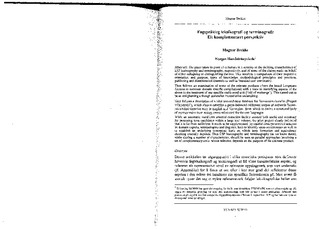| dc.description.abstract | The paper takes its point of departure in a scrutiny of the defining characteristics of
LSP lexicography and tenninography, respectively, and of some of the claims made on behalf
of either collapsing or distinguishing the two. This involves a comparison of their respective
orientation and purpose, types of knowledge, methodological principles and practices,
publishing and dissemination channels as well as intended user community.
Then follows an examination of some of the relevant products (from the broad Longmans
Lexicon to narrower domain specific compilations) with a view to identifying aspects of the
above in the treatment of one specific multi-word unit ("bill of exchange"). This turned out to
be an enlightening although somewhat inconclusive undertaking.
Next follows a description of a pilot text-and-tenn database for Economics domains (Project
TERMINEC), which aims to establish a genre-balanced calibrated corpus of authentic Economics/
Administrative texts in English and Norwegian from which to derive a structured body
of representative tenninology cross-referenced for the two languages.
While an automatic word/tenn oriented extraction facility seemed both useful and necessary
for proposing tenn candidates within a large text volume, the pilot project clearly indicated
that it is far from sufficient: It needs to be supplemented by careful concept-oriented analysis
by domain experts, tenninologists and linguists, both to identify «non-occurrences» as well as
to establish an underlying conceptual basis on which term fonnation and equivalence
checking crucially depends. Thus LSP lexicography and terminography (as we know them),
while sharing a number of characteristics, should be seen as parallel approaches involving a
set of complementary tools whose selection depends on the purpose of the ultimate product. | nb_NO |
